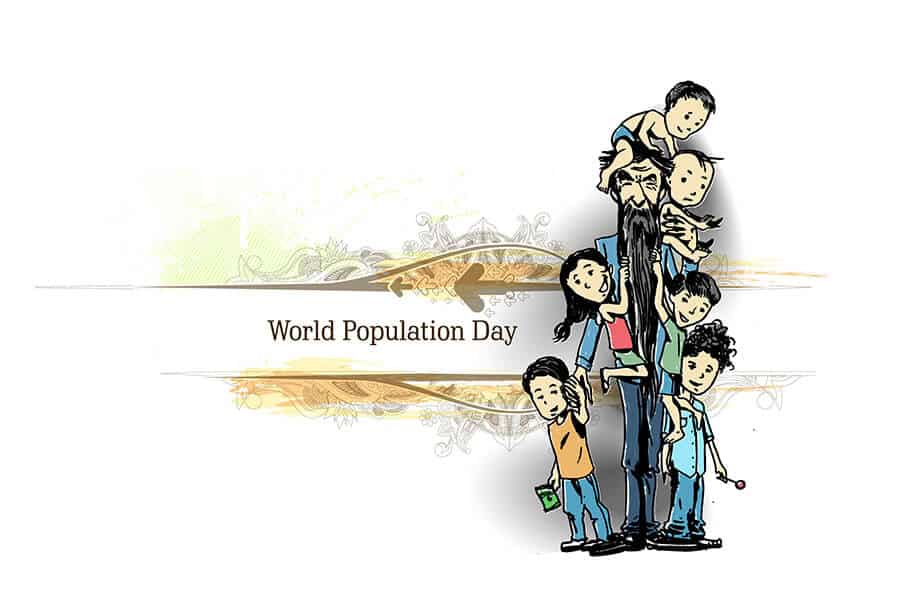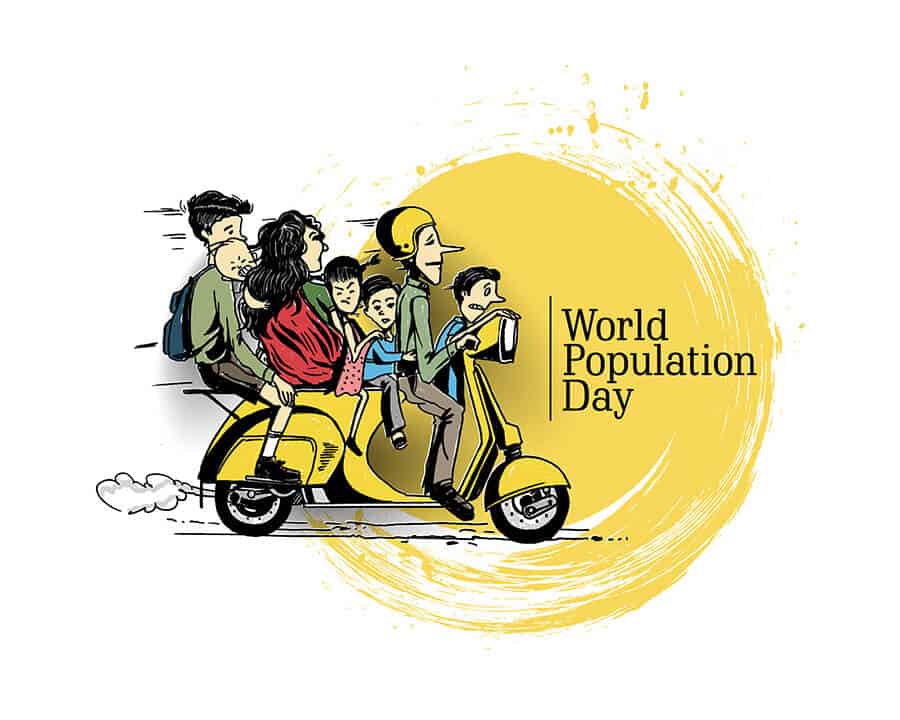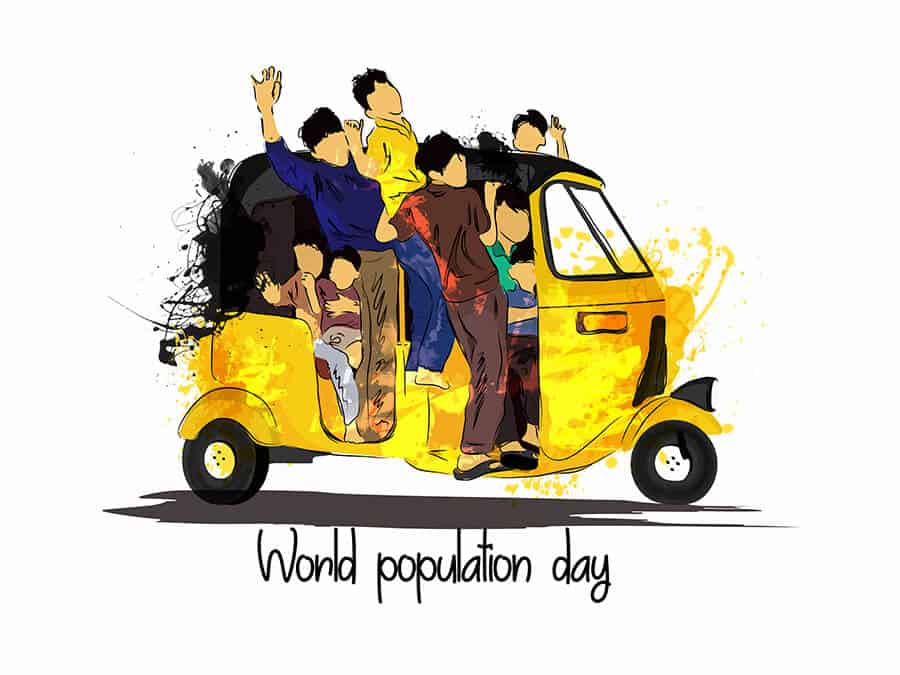According to the World Health Organization (WHO), the purpose of this decision was to raise awareness on population issues, which include; gender equality, maternal health, poverty, human rights, responsible consumption of our food and a safe environment for all, as well as family planning and unintended pregnancies.
World Population Day’s History
Over three decades ago (1987), the world’s population reached 5 billion. Today, the world’s population is estimated to have reached 7.8 billion people.
July 11, 1987, was pinned down as the day when the world reached five billion inhabitants, all of whom must share the planet and its natural resources. Considered as a historic milestone and followed by huge public interest, the United Nations General Assembly decided to observe this day through its resolution 45/216 in December 1990.
Overpopulation- Uncontrolled Growth of Population
Overpopulation occurs when the sum total of the human population surpasses the capacity of the earth to support it. As illustrated above, we are witnessing a rapid growth of population, and it’s a must to understand its needs and reckon the planet’s shortcomings and the attendant challenges.
Overpopulation causes a variety of negative impacts for people and the entire planet. Faster climate change, limits to natural resources and reductions in the quality of natural resources (water and food), environmental degradation, a constantly higher cost of living, and the potential for wars and conflicts are among the inevitable effects of overpopulation that need to be addressed and dealt with.
Let’s take a brief look at what causes overpopulation.
Poverty, poor family planning, and the low use of contraceptives are among the key concerns that we need to elaborate when talking about overpopulation.
Poverty
As I discussed in my previous piece “Marking Sustainable Gastronomy Day – Can We Pave the Road for a Zero Hunger World?, the 2030 Agenda for Sustainable Development there is a need to set common principles and commit all United Nations Member States – developed and developing – to peace and prosperity for people and the planet, present and in the future, too. Central to these imperatives is the need to tackle poverty.
Goal one of this agenda is to end poverty in all its forms everywhere, and this acknowledges the need to eradicate extreme poverty, by 2030, for all people everywhere, currently measured as people living on less than $1.25 a day.
Poverty stands as the leading cause of overpopulation. According to the UN, the forty-eight poorest countries in the world are also likely to be the biggest contributors to population growth going forward. The UN estimates that the combined population of these countries is likely to increase to 1.7 billion in 2050, from 850 million in 2010.
Usually, extremely poor families that have been through unfortunate circumstances such as natural disasters need more people to work in the fields, and therefore they contribute to overpopulation. Poverty and the lack of access to education leads to higher birth rates and overpopulation.
High birth rates naturally take us to the crucial role of family planning and the use of contraceptives (especially in poor countries).

Poor Family Planning and Low Use of Contraceptive
Overpopulation can only be worsened by the situation caused by the worldwide spread of the COVID-19 pandemic. According to a recent UNFPA research, if the lockdown continues for six months with major disruptions to health services, then 47 million women in low- and middle-income countries may not be able to access modern contraceptives, resulting in seven million unintended pregnancies.
Increasing use of contraceptives and rising awareness about proper family planning and the use of contraceptives go hand to hand with the need to tackle poverty and overpopulation. They both contribute toward advancing the quality of life, especially among young women.
Access to the contraceptives that are used to prevent pregnancy ensures human rights are being respected, equally. Let’s add here that, according to an analysis, the use of contraception lowers health risks for women, especially for adolescent girls.
When births are separated by less than two years, the infant mortality rate is 45% higher than it is when births are 2-3 years and 60% higher than it is when births are four or more years apart.
As such, the above-mentioned issues challenge women’s and girls’ human rights. This fact is the reason why the World Population Day 2020 theme is dedicated to the wellbeing of women and girls all around the world, with particular emphasis in the rights violated during the COVID-19 pandemic.
Health and Rights of Women: The 2020 Theme of World Population Day
The theme this year is based on safeguarding the health and rights of women and girls around the world, especially during the time of the pandemic. This takes into account the increase in domestic violence cases during the COVID-19 lockdowns. Below we will elaborate on some findings to see the relevance of this year’s theme.
In support of this, I have read the previous YouthTime piece “Is the World Staring at a Mental Health Crisis? A Perspective from a Mental Health Activist”, in which well-known mental health activist Neerja Birla explains the prevalence of domestic violence cases in India.
Certainly, this pandemic has affected all communities, and undoubtedly all aspects of life. However, this crisis, as with many other things, has only amplified inequalities and the multiple forms of discrimination against the most marginalized groups in society.
In almost every country, staying indoors for a long period of time during quarantine, and self-isolation accompanied by the (possible) financial crisis have only caused domestic violence cases to increase in the form of gender-based violence and discrimination.

For instance, according to an article published by The Guardian, the United Kingdom’s largest domestic abuse charity – Refuge – has reported a 700% increase in calls to its helpline for domestic abuse reports in a single day. Similarly, another line for perpetrators of domestic abuse seeking help to change their behavior received 25% more calls after the start of the Covid-19 lockdown.
In addition, Monash University in Australia surveyed 166 family violence victim support practitioners across Victoria during a four-week period from the end of April into May. The report found that family violence spiked in the COVID-19 lockdown.
A similar warning came from the WHO, which has sounded the alarm over the surge of domestic violence as COVID-19 cases decrease in Europe. According to this, As COVID-19 rampaged through Europe, countries across the region reported a large increase in domestic violence.
It is of crucial importance for us to ensure a world where women and girls enjoy a life free of gender-based violence and have equal rights in all aspects of life.
Related articles:
World Environment Day – The Urgency of E-Waste
Observing World Day for Cultural Diversity and Development
Photos: Shutterstock / Edited by: Martina Advaney
Support us!
All your donations will be used to pay the magazine’s journalists and to support the ongoing costs of maintaining the site.
Share this post
Interested in co-operating with us?
We are open to co-operation from writers and businesses alike. You can reach us on our email at [email protected]/[email protected] and we will get back to you as quick as we can.










